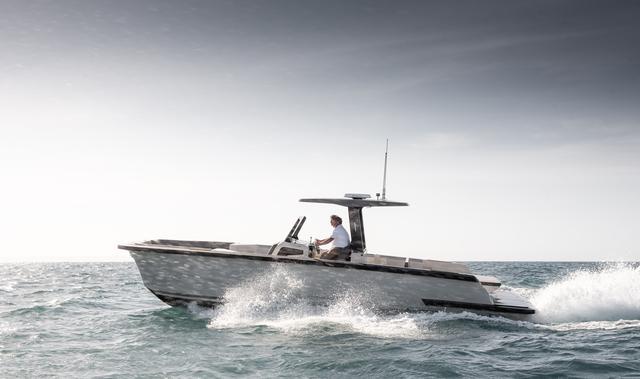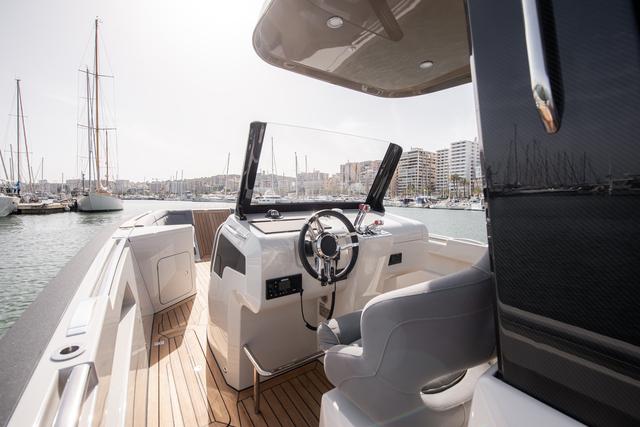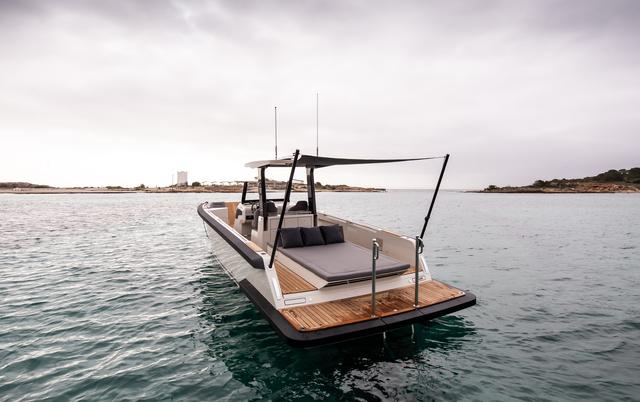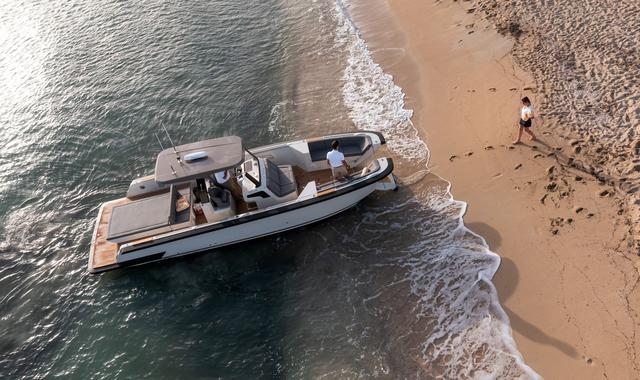BYD Delivers New Carbon Fiber Linx 30 Superyacht Tender
Carbon Aided Water
Spain’s foremost yacht design outfit has chalked up another success in the superyacht sector with the launch of the Linx 30 tender. BYD originally teamed up with BMComposites to develop the twin-hulled 9.48m tender specifically for the owner of a 63m expedition yacht. It is a limo for 10 guests, a sportsboat and a beach lander all rolled into one, and has now been adapted as a semi-custom model under the Linx brand.

“The client was looking for a broad, open boat, with good stability and good performance and a limited weight,” explains Tià Simó, principal architect at BYD. “It needed to beach land in comfort, and as well having an integrated Wassp system to scan the seabed for hazards in uncharted areas. And of course, the boat should fit comfortably into the tender garage of the mothership, and be light enough to be lifted by the yacht’s cranes.”

BYD was handed responsibility for delivering the whole project, including every element of its engineering and development work, while BMComposites took on the production. BYD’s talented team carried the brief from concept sketches right through to production, using a computer-controlled CNC milling machine and 3D printing. The hull is a technical masterpiece infused in super lightweight carbon fiber by BMC. It displaces 3.5t, including 430lt of diesel – enough to cover 130 nautical miles at its 25-knot cruising speed.

Appropriately enough for this full-service design office, it was a challenging brief which called on many different capabilities. “This full project has been a challenge. It required incredible attention to detail, meeting the needs of a professional crew, and simplifying the mechanisms as much as possible to reduce maintenance. Everything had to be contained in an integrated package, beautifully styled, with fully ergonomic design.”
Finely Balanced Design
Everywhere you look on the Linx 30, there is delight in the detail. The hardtop and windscreen fold down for easier stowage, for instance, while the beach landing ramp also does service as a bathing platform. There is an elegant integrated bimini and flexible sitting/lounging space for guests. Servicing has been simplified as far as possible by ensuring that the engines and waterjet drives have ample all-round access. Lifting points fold down flush and there is a discrete marine heads on board.
But it’s not just the small things. Advanced carbon composite #design and the bold use of foils slashes fuel consumption on the Linx 30, while increasing comfort and stability. “By reducing drag, the foils improve seakeeping and give up to 40% more speed for the same power and fuel consumption,” says Simó. The Hydrofoil Supported Planing Catamaran hull technology uses a big, fixed foil between the two hulls, and two trim tabs right aft. It doesn’t raise the hull out of the water, but provides enough lift to deliver major benefits.

The twin 250hp Yanmar engines are capable of propelling the boat above 40 knots, but represent a much smaller, lighter drivetrain than would be necessary to achieve the same speed on a conventional tender. Not only that, but by speccing Hamilton jets and Yanmar diesel engines, BYD has obviated the need to bunker explosive petrol on the mothership.
